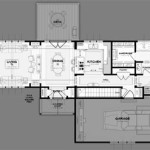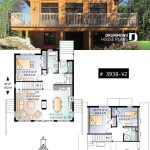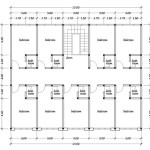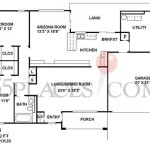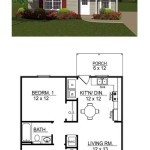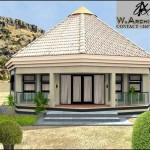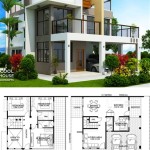House Plans With A Loft
Loft spaces offer versatile additions to homes, providing extra square footage that can be adapted to various needs. Incorporating a loft into house plans requires careful consideration of design elements to maximize functionality and aesthetic appeal. This article explores key aspects of house plans featuring lofts, focusing on design considerations, advantages, and potential challenges.
Design Considerations for House Plans with Lofts
The success of a loft-inclusive design hinges on several crucial factors:
- Ceiling Height: Adequate ceiling height is paramount for a comfortable and usable loft. A minimum height is typically required for headroom and to avoid a cramped feeling. Building codes often dictate minimum clearances.
- Accessibility: Careful planning of stairways or ladders is essential for safe and convenient loft access. Consider the steepness, width, and overall design of the access point in relation to the overall house flow.
- Natural Light: Maximize natural light by incorporating windows, skylights, or dormers. Well-placed openings enhance the loft's ambiance and reduce the need for artificial lighting.
- Ventilation: Proper ventilation is crucial for maintaining comfortable temperatures in the loft, especially in warmer climates. Consider ceiling fans, operable windows, or incorporating the loft into the home's central HVAC system.
- Purpose of the Loft: Define the intended use of the loft space early in the design process. This will inform decisions about layout, accessibility features, and necessary utilities.
Advantages of Incorporating a Loft
Lofts offer a range of benefits that contribute to both functionality and aesthetics:
- Increased Living Space: Lofts provide valuable additional square footage without expanding the home's footprint. This is particularly advantageous for smaller lots or when maximizing space within a specific budget.
- Versatility: A loft can serve a multitude of purposes, such as a home office, guest room, playroom, or extra storage area. Its adaptability makes it a valuable asset to any home.
- Enhanced Aesthetics: Lofts contribute to a home's visual appeal by adding architectural interest and creating a sense of spaciousness. The open feel and unique design element can enhance the overall aesthetic.
- Cost-Effectiveness: Adding a loft can be a more cost-effective way to increase living space compared to building an addition, as it utilizes existing roof structure.
Challenges of Designing with Lofts
While lofts offer numerous benefits, it's important to acknowledge potential challenges:
- Privacy: Lofts often lack privacy due to their open nature and connection to the lower level. Careful consideration of partitions, screens, or strategic furniture placement can address privacy concerns.
- Heating and Cooling: Due to their elevated position, lofts can be challenging to heat and cool effectively. Proper insulation and integration into the HVAC system are essential.
- Sound Transmission: Sound can easily travel between the loft and the lower level. Consider soundproofing measures during the design phase to minimize noise transfer.
Types of House Plans Suitable for Lofts
Certain house styles are particularly well-suited for incorporating lofts:
- Cabin Style Homes: The sloped roofs of cabin-style homes naturally lend themselves to loft spaces, creating cozy and functional areas.
- A-Frame Houses: The triangular shape of A-frame houses creates a large open space ideal for a loft, maximizing usable square footage.
- Barn Style Houses: Barn style homes often feature high ceilings and open floor plans, making them ideal for incorporating lofts with ample headroom.
Building Codes and Regulations
Adhering to building codes and regulations is essential when designing and constructing a loft:
- Headroom Requirements: Building codes typically specify minimum headroom clearances in habitable loft spaces.
- Egress Requirements: Safe and accessible egress routes, including properly sized windows and adequate stairways or ladders, are mandated.
- Structural Considerations: The existing roof structure must be assessed to ensure it can support the added weight and load of a loft conversion.
Cost Considerations
The cost of incorporating a loft varies depending on several factors:
- Size of the Loft: Larger lofts require more materials and labor, increasing the overall cost.
- Complexity of the Design: Intricate designs, custom features, and challenging access solutions contribute to higher costs.
- Finishing Materials: The choice of flooring, wall coverings, and fixtures impacts the overall budget.
Planning and Budgeting
Careful planning and budgeting are crucial for a successful loft project:
- Professional Consultation: Consulting with architects, engineers, and contractors is essential for ensuring structural integrity and code compliance.
- Detailed Plans and Specifications: Thorough plans and specifications will help prevent costly changes and delays during construction.
- Contingency Planning: Setting aside a contingency fund for unforeseen expenses is a prudent practice in any construction project.

20 House Plans With Lofts Tiny Small Luxury Designs Blog Homeplans Com
Small Cabin House Plans With Loft And Porch For Fall Houseplans Blog Com

Small Cottage Floor Plan With Loft Designs

Small Cabin Designs With Loft Floor Plans House Plan

Small Cabin House Plans With Loft And Porch For Fall Houseplans Blog Com

Small Cabin Designs With Loft Floor Plans

Image Result For 1 Bedroom With Loft House Plans Plan Cottage Floor One

Tiny House Floor Plan With Bedroom Loft

Small Cabin House Plans With Loft And Porch For Fall Houseplans Blog Com

1 Bedroom Loft Apartment Floor Plans 550 Ultra Lofts


